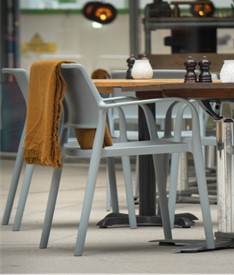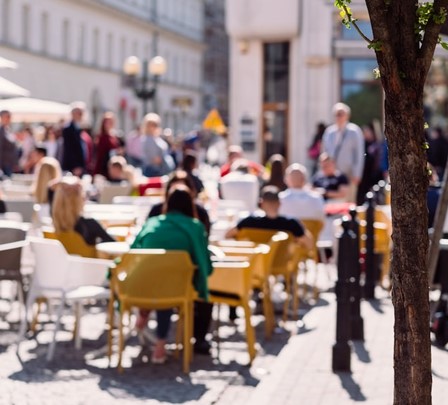Shabi Jafri is an entrepreneur in the Santa Monica, California area. With interest in the restaurant industry, Shabi Jafri discusses the news of post-pandemic issues the industry is now faced with. Detailed below, Mr. Jafri explains why outdoor dining was so popular during COVID, and now, why some restaurants are being penalized for continuing their outdoor seating – something that kept many restaurants afloat for the past 2 years.
Shabi Jafri of Santa Monica, California says that local restaurants may soon face some major changes to the industry, and the unfortunate truth is that it may impact some employees more deeply than others.
The change involves outdoor dining spaces, and while the city of Santa Monica is among the first in California to execute these new bylaws, it looks as though numerous other cities in the state are looking to follow suit.
The Growth of Outdoor Dining
If there’s any one industry that COVID-19 impacted the deepest, the restaurant industry takes the cake. Shabi Jafri says that many businesses, especially those that are independently owned, were forced to close their doors, while others had to find different ways to maneuver these unforeseen circumstances – one of the most popular has been COVID-friendly seating, including allocated outdoor dining space.
Shabi Jafri of Santa Monica, California says that not only did these spaces bring attention to these restaurants, but when the pandemic slowed and doors began reopening, the outdoor seating kept its popularity. Patrons loved being able to eat in the fresh air, especially in the beautiful California climate, and businesses were more than happy to accommodate the additional space, and patrons!
Santa Monica’s Main Street, which was once barren and empty, can now be seen bustling with customers leaking out of the front door and onto the sidewalk – a strong juxtaposition from the previous year alone explains Shabi Jafri.
The Issue Arising
Unfortunately for restaurant owners, the launch of a new program to make these outdoor spaces permanent could surprisingly entail the demise of these dining areas.
One of the biggest reasons is cost. Shabi Jafri of Santa Monica, California says that the city will allow restaurants to keep their outdoor dining spaces, only if they pay a fee per dining space. Many owners can’t put aside this extra money for fees, especially since the fee is $1,300 PER SEAT. There is no way a smaller restaurant could sell enough per seat to recoup the losses for the cost of having additional dining spaces.
If restaurants have made dining spaces in lieu of parking spots, they’ll be limited to using only two parking spaces, and many dining establishments, like Ester’s Wine Shop and Beer, have already made (and utilized) more than that.
Shabi Jafri says that other areas, like 1212 Restaurant, are being told that their dining spaces go against the city’s fire code, in spite of the fact that they’ve been in service for quite some time.
The restaurant is now being told to take down the dining spots or pay the fee. Sadly, this means that many workers will need to be laid off, and for some employees, like a female refugee from Ukraine, this employment loss could be devastating.
 What This Means for Businesses
What This Means for Businesses
“Why punish the survivors?”
That’s what the owner of Crudo E Nudo, a seafood restaurant just 3 blocks away from Venice (but still located in Santa Monica) had to say about the new dining provisions. Their restaurant is moderately small, and instead of being rewarded for withstanding the pandemic, they now have to face the burden of new city laws.
While it’s true that bigger restaurants can pay these fees and make the necessary changes to deal with this sudden financial burden, the same cannot be said for smaller dining options – many of which have owners that rely on their restaurants as their main source of income explains Shabi Jafri.
For them, $50,000 in fees isn’t just detrimental, but impossible. Some shop owners say that even reducing their outdoor seating by one or two dining spots could be damaging to their income, as those spaces could mean 3-4 tables’ worth of paying customers.
Shabi Jafri explains that these smaller establishments not only have to pay fees to regulate their available seating, but they have to shoulder the losses of the tables they’re told to take down.
And it’s not just a singular fee. Once a restaurant can fully pay off the cost of regulation for each seat, parking space, and tables, they must then pay a monthly fee of $680 on top of their rent in order to maintain the spaces. Again, while some bigger establishments may make enough to pay these fees, it could send smaller businesses to an early grave.
Also worrisome are the job losses that companies may have to undergo. Many restaurants have employed people in proportion to the number of customers they serve on a daily basis. When seating is removed, there’s less need for employees, which means that people may lose a source of income during an already financially strenuous time.
What The City Has to Say
Shabi Jafri says that the public info manager for Santa Monica wanted to ease worry, stating that the city would be happy to work with businesses to ensure that these costs aren’t too much of a burden. The public responded with a counter.
A possible solution put on the table would be for the city to charge based on establishment income rather than having a base rate for each restaurant. Proportionate fees will ensure that all businesses stay on their feet, while investing in the city in return.











